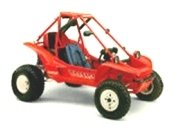
PilotOdyssey.com

 |
PilotOdyssey.com |
|
| It is currently Tue May 21, 2024 6:27 am |
|
All times are UTC - 5 hours [ DST ] |
 
|
Page 1 of 1 |
[ 10 posts ] |
|
| Author | Message | |||||
|---|---|---|---|---|---|---|
| hoser |
|
|||||
|
Joined: Mon Dec 15, 2003 2:40 pm Posts: 22526 Location: Chicago |
|
|||||
| Top | |
|||||
| Nuke Em |
|
|||
|
Joined: Wed Jan 14, 2004 8:45 pm Posts: 2243 |
|
|||
| Top | |
|||
| King Kx |
|
|||
|
Joined: Wed Sep 29, 2004 4:48 pm Posts: 1037 Location: CT |
|
|||
| Top | |
|||
| hoser |
|
|||
|
Joined: Mon Dec 15, 2003 2:40 pm Posts: 22526 Location: Chicago |
|
|||
| Top | |
|||
| King Kx |
|
|||
|
Joined: Wed Sep 29, 2004 4:48 pm Posts: 1037 Location: CT |
|
|||
| Top | |
|||
| DunePilot |
|
|||
|
Joined: Fri Jan 16, 2004 3:32 pm Posts: 77 Location: Seattle, WA |
|
|||
| Top | |
|||
| hoser |
|
|||
|
Joined: Mon Dec 15, 2003 2:40 pm Posts: 22526 Location: Chicago |
|
|||
| Top | |
|||
| hoser |
|
|||
|
Joined: Mon Dec 15, 2003 2:40 pm Posts: 22526 Location: Chicago |
|
|||
| Top | |
|||
| King Kx |
|
|||
|
Joined: Wed Sep 29, 2004 4:48 pm Posts: 1037 Location: CT |
|
|||
| Top | |
|||
| hoser |
|
|||
|
Joined: Mon Dec 15, 2003 2:40 pm Posts: 22526 Location: Chicago |
|
|||
| Top | |
|||
 
|
Page 1 of 1 |
[ 10 posts ] |
|
All times are UTC - 5 hours [ DST ] |
Who is online |
Registered users: Bing [Bot], Google [Bot] |
| You cannot post new topics in this forum You cannot reply to topics in this forum You cannot edit your posts in this forum You cannot delete your posts in this forum You cannot post attachments in this forum |